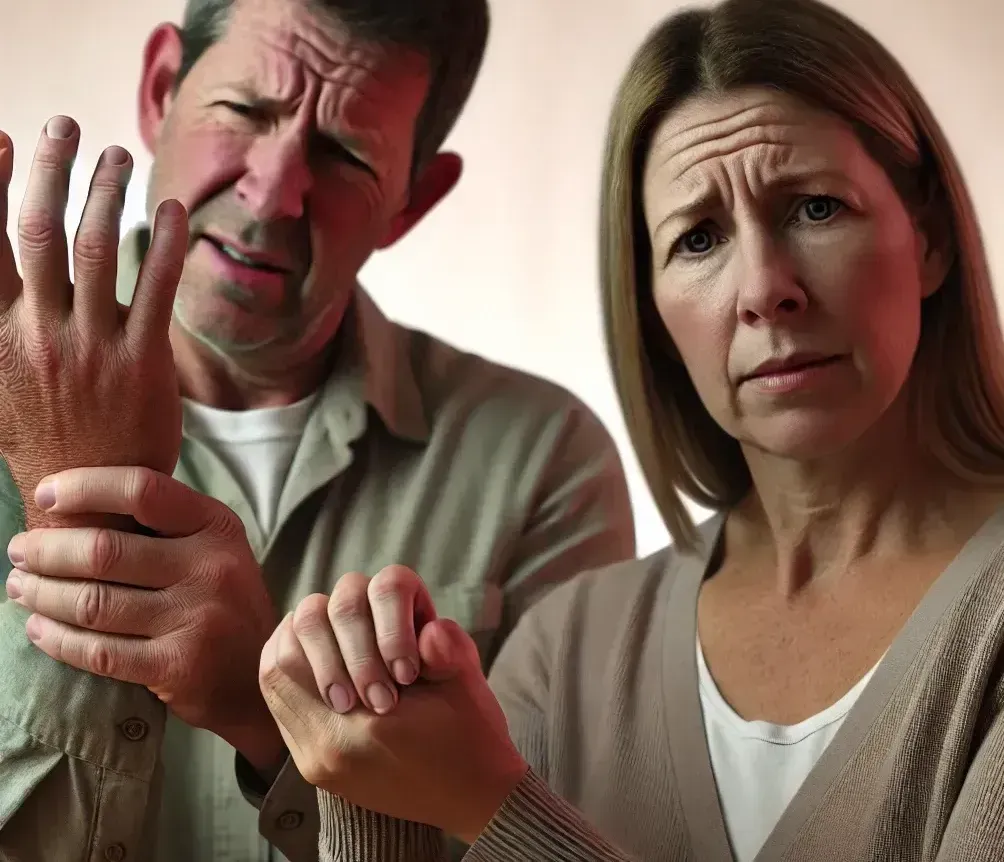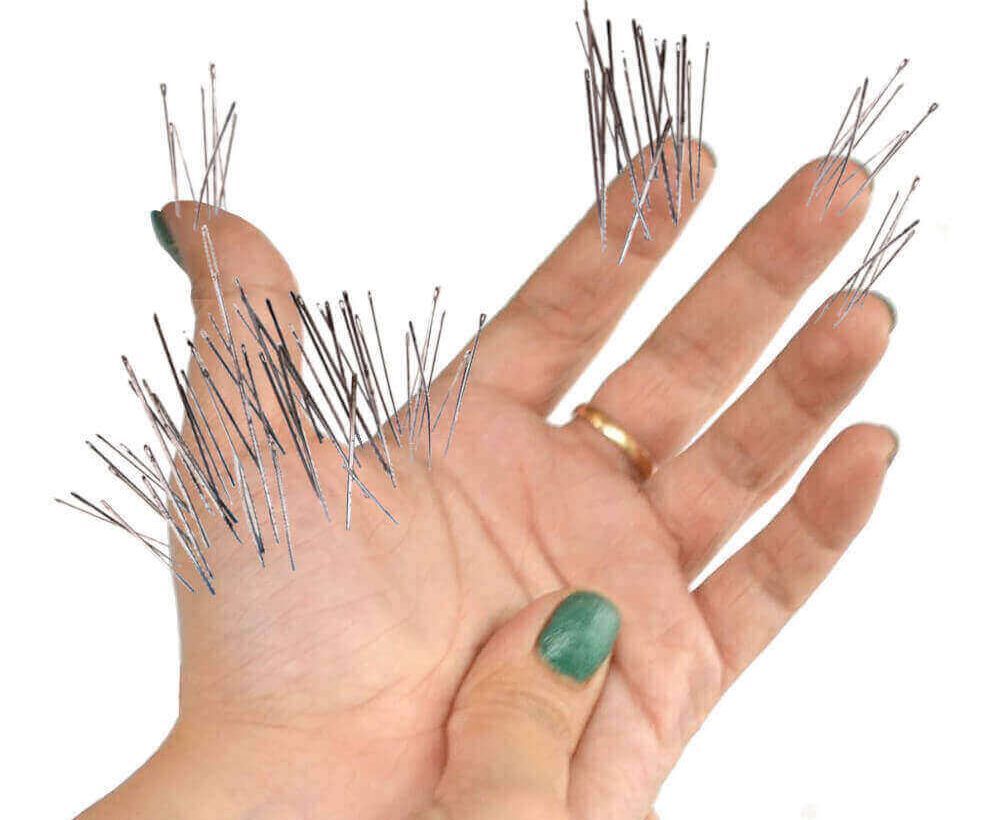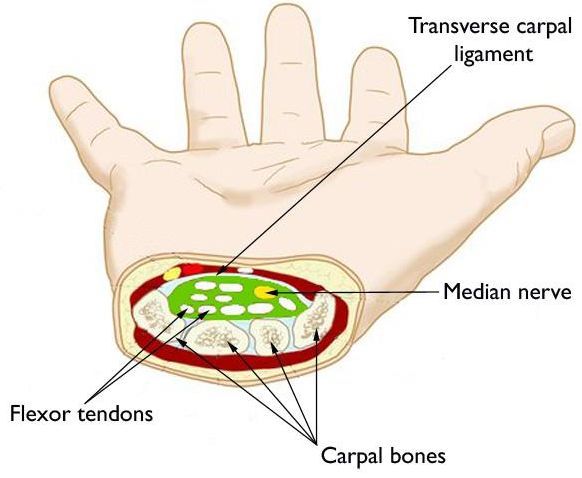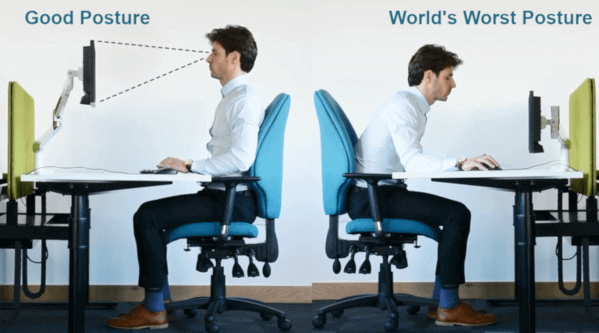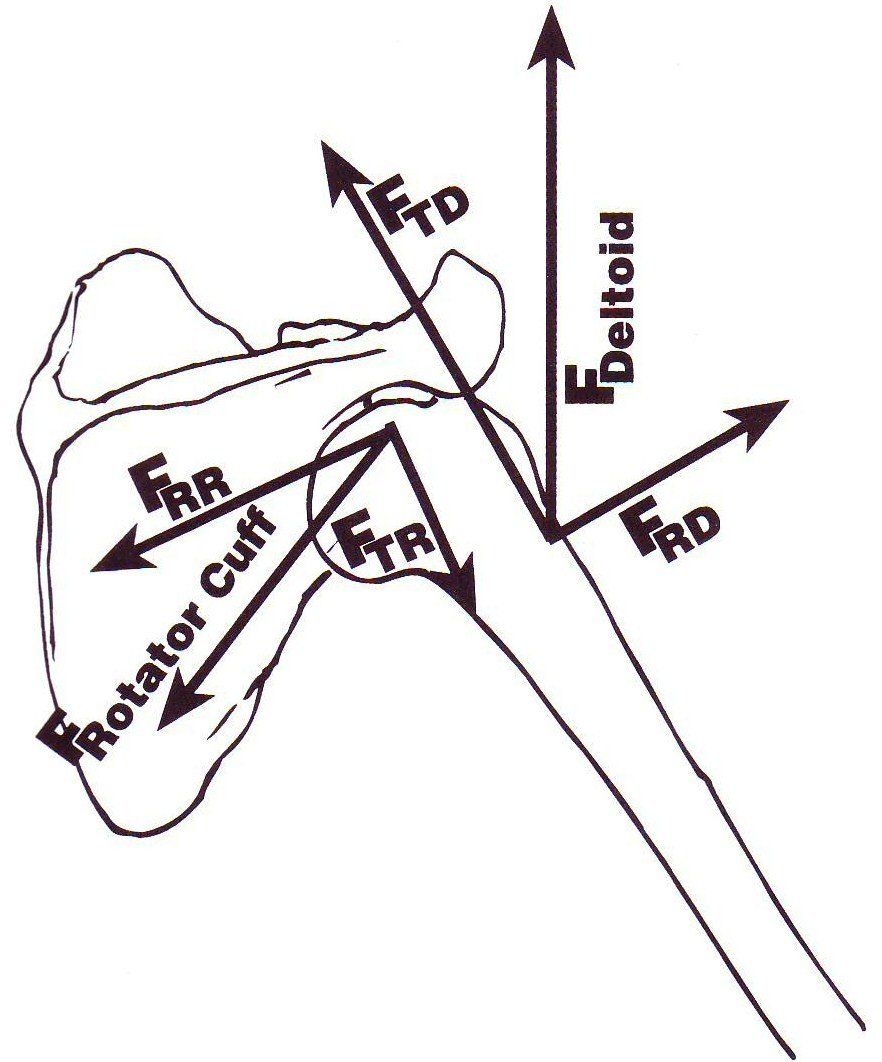How Emotions and Carpal Tunnel are Related
Table of Contents
- Mood & pain: one kind of cause & effect
- What is carpal tunnel syndrome?
- Symptoms of carpal tunnel
- How carpal tunnel progresses
- How carpal tunnel syndrome happens
- Crowding causes symptoms
- Risk factors for carpal tunnel syndrome
- Narrow wrist
- Family history
- Harmful hand activities
- Metabolic & other conditions
- Poor Sitting Posture
- The results of poor posture are unbalanced forces
- Effects of emotions on the body
- Embodied cognition
- The puzzle is complete
- Stress and posture affect your wrist
- If you're at risk for carpal tunnel, look out!
- Summary
- FAQs
- About
Scientists already now know that emotions and carpal tunnel syndrome are definitely related. Admittedly, it sounds odd. But being stressed-out really
can give you carpal tunnel syndrome. Exactly how these two problems are linked together is probably not what you think.
Mood & pain: one kind of cause & effect
Many doctors frequently ask about the emotional stress in a patient's life. They're not being nosy. It's vital information in establishing a diagnosis for the patient's hand problem That's because stressful emotions and carpal tunnel are intimately linked.
Everyone knows that physical pain affects mood. For instance, it's almost cliché that a bad back makes you grumpy. So whether the pain is from a bad back, broken arm, or headache, our mood is affected.
Carpal tunnel syndrome is no different. It’s a condition generally associated with
severe hand pain or intolerable
numbness. So it’s obvious that carpal tunnel pain can make people miserable.
But what if carpal tunnel pain didn’t start yet? Can your emotional state (like being grumpy or stressed)
encourage
pain to appear?
The amazing answer is
“Yes”!
What is carpal tunnel syndrome?
Before going any further, it’s important to know what carpal tunnel syndrome is. Note that the proper name is “carpal tunnel syndrome”, although most of the world simply calls it “carpal tunnel”.
Basically, it’s a
neurological disorder. It happens as a result of a series of events within a narrow space deep inside your wrist joint. That space is called the
carpal tunnel, which is where the name of the condition comes from.
Symptoms of carpal tunnel
How carpal tunnel progresses
At first, your fingers may feel numb or tingly, especially at the fingertips. Other people may
feel pain as the first sign that the condition has begun. Still other patients first feel soreness, burning or itching. Some may feel their fingers and hand are puffy, even though they're not.
Pain symptoms usually start off in the thumb area. As carpal tunnel syndrome advances, the numbness and tingling worsen. And the pain will feel sharper or more piercing. Sometimes pain shoots through the wrist and up the forearm, like an
electric shock. Sometimes, the pain shoots toward the fingers.
In time, patients complain they've developed clumsy hands or fingers. It’s difficult to button shirts, tie a shoelace, or pick up small objects like coins. Their hands also feel weak, so it's difficult to open a jar or turn a doorknob. With more
severe stage carpal tunnel syndrome, patients may lose sensations of hot and cold in their fingers.
Symptoms can go from barely noticeable to severe within 1 month. But typically it takes 6-12 months for symptoms to be so bad that patients seek medical help.
That’s also about the time when symptoms in the opposite hand usually appear. This occurs in over 80% of patients and is called
bilateral carpal tunnel syndrome.
How carpal tunnel syndrome happens
To understand the relationship between emotions and carpal tunnel, it’s necessary to appreciate a key feature of wrist anatomy. That is, the intense
crowding
of structures inside the wrist joint.
The center of this tightly-packed area is the narrow carpal tunnel space or passageway. The walls of the passageway are comprised of wrist ligaments and bones – all of which are very rigid structures.
The two main structures
inside the passageway are the
median nerve and
flexor tendons. The median nerve is one of main nerves of the hand. It relays sensations to the brain like touch, pain, and vibration. The median nerve also transmits signals from the brain to move the fingers.
The flexor tendons are rope-like structures connecting the muscles of the forearm to each finger. One tendon makes one finger move (“flex”) whenever its corresponding forearm muscle contracts. All of the tendons make the fingers curl and grip.
The median nerve and tendons are packed tightly together. It’s like a fist full of drinking straws. Let's say one straw represents the median nerve while the others represent the tendons. Your clenched fist represents the stiff bony wall of the carpal tunnel passageway. All of the crowding within this confined space means there’s no room for anything to expand.
Crowding causes symptoms
Carpal tunnel syndrome begins when the flexor tendons inflame and swell. But there isn’t much room for swelling due to the stiff walls surrounding the tendons and median nerve. Going back to the drinking straw analogy, the packing is so tight and crowded that nothing can move or expand.
As a result of tendon swelling, pressure is exerted against the median nerve. That force compresses the nerve. With more and more swelling, the tendons eventually crush the nerve.
Risk factors for carpal tunnel syndrome
It’s important to state that
nobody knows why
people get carpal tunnel syndrome in the first place. What causes tendons to inflame in some people but not in others is a complete mystery. However, there are certain
risk factors
that give you a higher probability of developing this condition.
Narrow wrist
Most scientists believe a main risk factor in getting carpal tunnel syndrome is having a narrow wrist. That's because small-framed people are more prone to the condition. Not surprisingly, small-framed people also have a smaller carpal tunnel space than most others.
Obviously, a smaller carpal tunnel passageway means more crowding in an already packed area. This may be why
women are more prone to having carpal tunnel syndrome. Yet, many small-framed people never get this condition. So the anatomical relationship is still unclear.
Family history
A
family historyof having carpal tunnel is a major risk factor. If a parent or sibling had carpal tunnel then you have a much higher probability of getting it. The reason is unclear. But it may have its roots in acquiring a specific type of anatomy, like a small carpal tunnel space.
Of course, our body chemistry is also hereditary. So how a compressed median nerve responds to pressure (making it more or less resilient) is genetically linked as well.
Finally, the way
collagen is made and used by tendons is also genetically controlled. Tendon
adhesions and restrictions are regulated by collagen deposition. Since abnormal collagen deposition is hereditary, it's therefore a factor in developing carpal tunnel syndrome.
Harmful hand activities
People who perform certain
harmful hand activities, like repetitive grip-and-release motions, are more prone to getting carpal tunnel syndrome. This is the "repetitive stress" risk that many doctors attribute to getting this condition. Occupations infamous for having carpal tunnel are:
Metabolic & other conditions
Metabolic and other conditions also put you at higher risk for getting carpal tunnel. The most notable are
rheumatoid arthritis and
diabetes.
Pregnancy also increases the risk several fold. In fact, it occurs in over 50% of women in their third trimester. Pregnancy-related carpal tunnel usually goes away after childbirth in about half of women.
The reason all of these conditions are linked with carpal tunnel is due to
fluid distribution. Changes in the body’s fluid balance usually impacts the joints. Therefore, more fluid pressure inside the wrist joint will harm the median nerve.
A patient might be predisposed to carpal tunnel. Perhaps their wrist is already at the threshold of median nerve compression by actively swelling tendons. Thus, any
added
pressure inside the carpal tunnel space (as due to pregnancy) can trigger full-blown symptoms.
Poor Sitting Posture
Poor sitting posture is an often-overlooked contributor to carpal tunnel syndrome
And it’s the real focus of this article. You'll see how stressful emotions and carpal tunnel syndrome have a common link.
The National Institutes of Health warns that
sitting for long periods of time is harmful. Specifically, we know that sitting at a computer workstation results in a higher incidence of carpal tunnel syndrome.
There are two main reasons for this:
- Rapid & repetitive finger typing
- Poor sitting posture
We already discussed the
direct link between repetitive moments and carpal tunnel. But when it comes to poor posture, the relationship is a bit murkier.
We know poor posture can result in head, neck, shoulder, arm, and hand pain. Nearly everybody's experienced that just by typing at a keyboard a lot.
The results of poor posture are unbalanced forces
With any muscle strain, the location of the pain depends on which muscles you strained. Moreover, other muscle groups try to compensate (or balance) forces created by the strained muscles. That compensation, in turn, strains additional muscle groups which are also trying to
balance forces.
There are numerous upper body muscle groups that must work together for optimal balance. The illustration above shows 6 primary forces needed just to balance the shoulder blade and arm.
Muscle groups trying to balance a strain is like your car being out of alignment. Wheel misalignment transmits everywhere, causing the entire car to shake and rumble.
For example, let's say you have neck muscle strain. Most of the forces in your upper body (neck and shoulders) are then transmitted downward, to your upper arms, lower arms, and ultimately to your wrists. The wrists are the final major joints to balance all of the stressful postural forces in the upper body.
As a result, any compensation by upper body muscles will put strain on the wrist’s anatomy. The result is almost certain disturbance of the carpal tunnel passageway.
When any force disturbs the normal environment of the carpal tunnel - even just a little - it impacts on the amount of pressure against the median nerve.
Those forces that compensate for upper body muscle stress are the underlying link between poor posture and carpal tunnel syndrome.
Effects of emotions on the body
At first glance, emotions and carpal tunnel seem completely unrelated. How can happiness, sadness, anxiety, or stress influence your wrist joint?
But as we saw, the common link is poor sitting posture.
Emotions like anxiety and stress are
tightly linked to hunching and slouching while you're seated. But scientists don’t know if we slouch because we’re stressed or we’re stressed because we slouch.
Embodied cognition
The relationship just described is the essence of the field of
embodied cognition. It concerns how our body and mind influence each other. In other words, it means our mind can influence how our body reacts, and our body can influence how our mind reacts. The two are connected in definite yet mysterious ways.
The emotion of particular interest here is
stress. For decades medical science has documented the
effects of stress on amazingly diverse body parts, from the heart to the kidneys. To date however, no
direct link between stress and acquiring carpal tunnel syndrome is known.
However, the indirect link (via poor posture) is very strong.
The puzzle is complete
Everybody is familiar with this: work deadlines and pressure to perform result in stress and anxiety. Getting the job done quickly and properly is paramount
- or else!
One consequence is that while at their workstations, most people don’t focus on anything
but the job. Maintaining good sitting posture is usually completely ignored.
In fact, the stressed-out, slouching or hunched-over typist is the typical image of today's office worker.
Slouching and hunching are the very definitions of poor posture. These positions tense muscles in the upper body and disturb the natural (balanced) anatomy.
The tense muscles produce unbalancing forces in the upper body. In order to compensate, the body ultimately transmits the stressful forces downward, toward the wrist joint. Hence, the carpal tunnel space is disrupted.
Stress and posture affect your wrist
So the relationship between emotions and carpal tunnel syndrome is linked by poor sitting posture. What's interesting is that most slouching or hunched-over workers never develop the condition. Our bodies are amazingly adept at adjusting to change.
Nevertheless, the link between having carpal tunnel syndrome and having poor sitting posture is real and undeniable. That’s particularly important if your body is “set up” for developing problems. In other words, if you are predisposed to getting carpal tunnel syndrome (having thin wrists, pregnancy, etc.), then having poor posture may just be enough to push it over the line.
If you're at risk for carpal tunnel, look out!
If you're at risk for getting carpal tunnel, poor sitting posture can push you over the edge and cause symptoms to blossom.
For instance, let’s say your mother had carpal tunnel syndrome. This puts you at high risk for having it due to the family history. That means you're already
predisposed
to having the condition.
Perhaps symptoms are not showing up yet. But your carpal tunnel space might be only moments from starting to crush the median nerve deep inside.
Adding the effects of emotional stress and poor posture can push the wrist joint anatomy over the brink. As a result, the median nerve begins to feel the slow crushing process by the tendons.
At first the symptoms go completely unnoticed. But as it progresses, your carpal tunnel miseries begin.
Summary
At first, it doesn't seem like your daily emotions and carpal tunnel are remotely related. But stress and anxiety are linked to having tense muscles. Whether such emotions cause poor sitting posture or poor sitting posture causes the emotions is unknown. Yet the result is the same. That is, unbalanced upper body forces transmit down the arm to the wrist joint. This can increase the chances of acquiring carpal tunnel syndrome, particularly if you’re already at risk (predisposed). Therefore, everybody should appreciate the intimate link between emotions and carpal tunnel syndrome so that patients can be treated effectively.
FAQs
So the emotional "cause" of carpal tunnel is biomechanical in nature?
Most likely. And a primary way your normal biomechanics are disrupted is by maintaining poor posture.
If I fix my poor posture, will my carpal tunnel symptoms disappear?
It's possible if your symptoms are mild. But it is also possible that your poor posture has caused so much imbalance that merely readjusting it might be too little, too late to reverse the disorder.
I have great sitting and standing posture, yet I have carpal tunnel syndrome. Why is that?
Emotions, posture, and internal biomechanics or anatomy are just some of the possible causes of carpal tunnel syndrome. Many other factors can contribute to getting this disorder.
About



